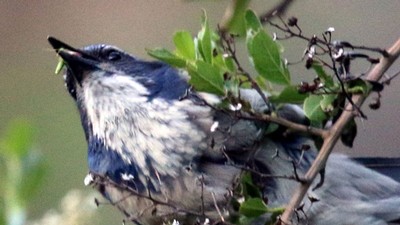USU Chemists Observe Molecular 'Drum' that Beats Coordination Record
USU doctoral student Ivan Popov is among a team of chemists that observed the highest coordination number to date for an atom. With USU chemistry professor Alex Boldyrev and colleagues, Popov published the findings in 'Nature Communications.'
Utah State University chemists Ivan Popov and Alex Boldyrev are among a multi-university team that’s observed a molecular cluster that sets a new coordination record in chemistry. Their work, published in the Oct. 12, 2015, issue of Nature Communications, is highlighted in Chemical & Engineering News, Science & Technology Concentrates and Chemistry Views, as well as other international media.
The team’s research is supported by the National Science Foundation.
Working with Tian Jian, Gary Lopez and Lai-Sheng Wang of Brown University, Popov and Boldyrev predicted the existence of the drum-shaped, three-dimensional cobalt-boron cluster, which was obtained by pressing cobalt and boron into a pellet and vaporizing it with a laser beam. The complex consists of two boron rings connected to a central cobalt atom via 16 bonds, the highest coordination number of atoms ever observed, so far, for an atom.
“This is exciting because doping of pure boron clusters with a transition metal atom induced an earlier two-dimensional to three-dimensional structural transition,” says Popov, a doctoral student in USU’s Department of Chemistry and Biochemistry. “This gives us new insights into boron, which possesses diverse chemical structures and bonding second only to carbon.”
The knowledge gives scientists new possibilities for designing boron-based nanomaterials, says Popov, who joined USU’s program in 2011, after earning bachelor’s and master’s degrees from the People’s Friendship University of Russia in Moscow.
“The new findings expand our knowledge of these compounds and have implications for future nanotechnology applications,” says Boldyrev, professor in USU’s Department of Chemistry and Biochemistry and Popov’s advisor. “Now it’s up to experimentalists to take explore our theories.”
He notes these findings emerge from long-time collaborations with varied university researchers throughout the world and, in particular, with Popov’s alma mater, located in Boldyrev’s homeland.
“Many of my past and current graduate students completed studies at PFUR before coming to Utah State,” Boldyrev says. “It’s been a valuable relationship that has benefited both universities.”
Related links:
- “USU Chemists Unlocking Solution to Contorting Nanomaterials,” Utah State Today
- USU Department of Chemistry and Biochemistry
- USU College of Science
Contact: Ivan Popov, vanekpopov@gmail.com
Writer: Mary-Ann Muffoletto, 435-797-3517, maryann.muffoletto@usu.edu
The drum-shaped, three-dimensional cobalt-boron cluster observed by USU chemists consists of two boron rings connected to a central cobalt atom via 16 bonds. This discovery could open new possibilities for designing boron-based nanomaterials.
TOPICS
Research 885stories Chemistry 110storiesComments and questions regarding this article may be directed to the contact person listed on this page.








